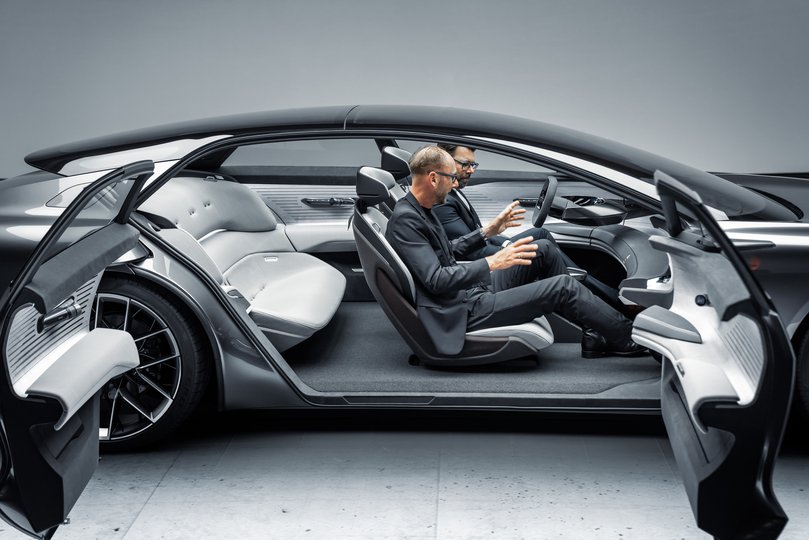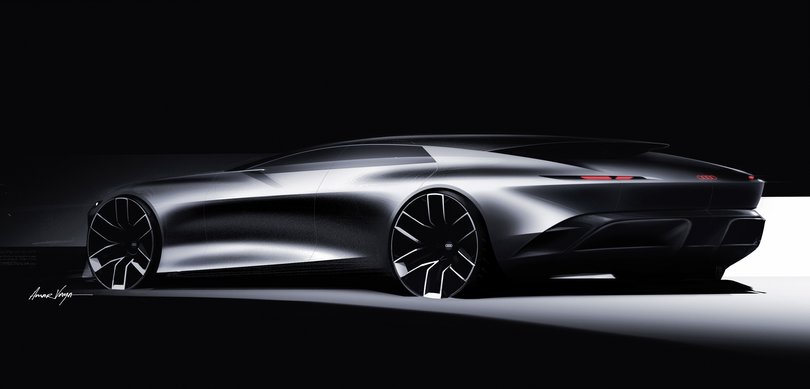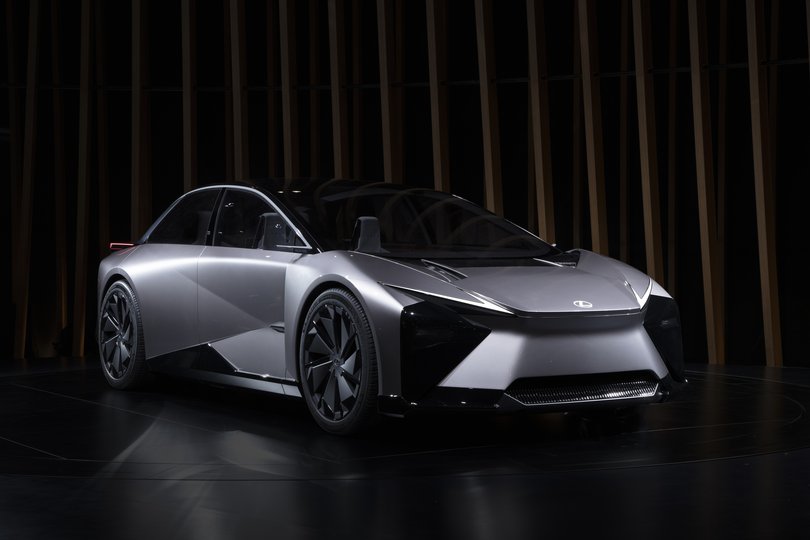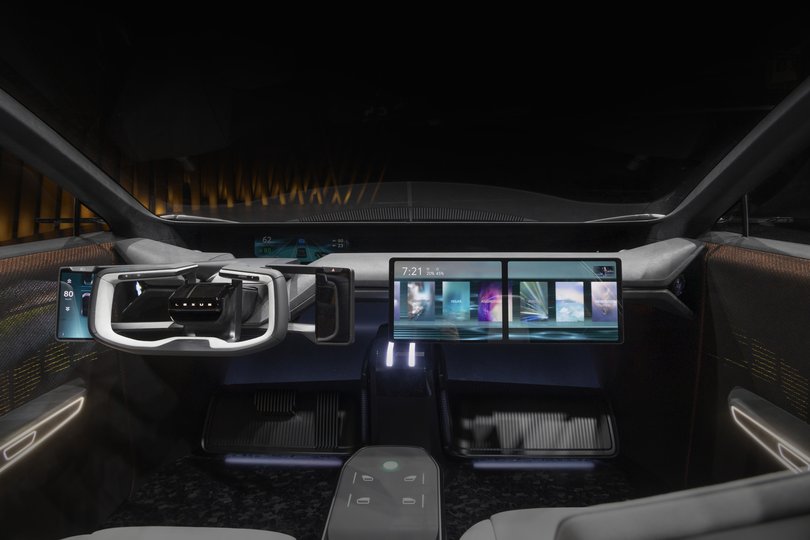BMW’s mood-paint, Audi’s light shows and Polestar’s windowless coupes are turning sci-fi into reality

Cars that can change the colour of their paint to suit your mood, use their headlights to create a stunning light show to delight your children, or tuck the steering wheel away in the dashboard and take over if you don’t feel like driving may sound like fantasy fiction, but these innovations are already here, or won’t be far away.
When you think about the pace of innovation in the world of motoring, it’s clear that it happens not just quickly, but constantly. Cast your mind back a decade or two, and the idea of super-silent electric cars with giant touch screens the size of side tables would have seemed sci-fi silly.
It’s also little more than a decade since Apple CarPlay meshed our smartphones with pretty much every new vehicle on the road, allowing us access to not only navigation, music and podcasts, but the ability to read text messages aloud while driving and dictate responses — a huge boon for safety.
Sign up to The Nightly's newsletters.
Get the first look at the digital newspaper, curated daily stories and breaking headlines delivered to your inbox.
By continuing you agree to our Terms and Privacy Policy.It should come as no surprise, then, that BMW really is on the brink of bringing more colour and movement to our roads using the same E Ink technology found in e-reader devices like the Kindle. The brainchild of Australian-born engineer Stella Clarke, this colour-change technology — which could change the hue of your vehicle instantly at the touch of a button — has already been shown off in a concept called the BMW iX Flow.
While that car only displayed monochromatic shifts, Clarke says the use of more than 30,000 colours is possible.
“This gives the driver the freedom to express different facets of their personality or even their enjoyment of change, outwardly, and to redefine this each time they sit in their car,” Clarke explains.
“Similar to fashion, or the status ads on social media channels, the vehicle then becomes an expression of different moods and circumstances in daily life.”
Using the E Ink panels to display messages — like your car’s state of charge — is also possible.
And this tech, sure to be copied and adapted by plenty of car companies, also has a practical application, because it could even extend the range of electric vehicles.
BMW claims that changing the colour of a car can help improve electric efficiency by regulating temperature. In cooler weather, a dark outer skin would absorb more warmth, while on hot days the car could choose to look lighter, thus absorbing less heat and requiring less energy to be spent on air-conditioning systems.
Another eye-catching piece of technology that BMW will roll out more imminently is its innovative BMW Panoramic Vision concept, which basically brings the world of wide screen into your vehicle.
Panoramic Vision, which is likely to be a part of the next BMW iX3 electric car, is a new head-up display concept where relevant driving information is projected onto a black printed surface that spans the entire lower section of the windscreen, from A-pillar to A-pillar.
The driver can customise what they want to see on this vast display and, apart from looking amazing and futuristic, its main advantage is that its visuals are projected in the driver’s ideal line of sight, maximising ergonomic efficiency and keeping your eyes on the road.
While BMW will be leading the fashion stakes by day, Audi is already ruling the night with its incredible Digital Matrix headlights, which can not only create cool and clever projections on your garage door, or any wall, but paint light markings on the road in front of you, pointing out where the middle of the lane is on dark country roads, for example, or warning of approaching road works.
These lights — already available on cars like the SQ8 e-tron electric SUV — contain 1.3 million micromirrors that can tilt up to 5000 times per second to animate just about any shape you can think of. That tech — along with an augmented reality-equipped head-up display that allows you to play video games while you’re at the wheel (but parked, obviously) — is already in Audis, but what’s coming next is truly mind-boggling.
Audi’s Grand Sphere is a concept car, but one that the company’s brand manager, Philipp Gundert, has described as close to production-ready, and also as “a first-class cabin on wheels”. Just as you wouldn’t expect to have to fly the plane while sitting in first class, there’s no need to drive this vast autonomous pleasure palace.

“Automated driving will create the freedom to experience more and allow the customer to choose how they want to spend their time in the vehicle,” Gundert enthuses.
By the look of the many, many screens in the Grand Sphere, a lot of that time will be spent streaming Netflix, video conferencing or perhaps online shopping. The good news for those who are upset by the idea of never getting to drive again is that there’s a steering wheel hidden away in the dash of this Uber Audi, which you can access should you want to take control.
Audi promises that “self-driving is embedded deep in Audi’s DNA”, which is a pretty remarkable sentence to have to say at all, really, when you think about it.
No mention of innovation would be complete without the use of the words “artificial intelligence” of course, and the tech-loving Japanese luxury brand Lexus has already begun incorporating AI into its vehicles through a new software platform called Arene.

While Arene starts learning about you and your preferences from the first time you drive your new Lexus — using an AI agent it calls Butler — it will also be able to change the way the car steers, performs and sounds in line with your personal driving tastes.
Arene will debut something called Interactive Reality in Motion, which uses the car’s onboard sensors in conjunction with digital data from the surroundings.
As Lexus explains it, this means that when drivers point to objects or places of interest during a journey, the car will promptly deliver information about what you’re looking at, and remember that these things are of interest to you.

Express a preference for a park you’re passing that’s full of children’s play equipment and the next time you’re near something similar, your Lexus will offer the option of navigating you to it. This will also work with restaurants offering certain kinds of food, and hundreds of other options.
Obviously, then, there’s a lot going on in new cars below the surface, or under the hood, but what about actually making cars look different, or more modern? When electric vehicles first arrived, there was plenty of conjecture that they might start to offer radically different designs — with no big lumpy engine up front, the passenger cell could be stretched and lowered, creating SUV-style amounts of interior space in cars that still looked like sleek coupes.
One company that’s now making that kind of thinking a reality is premium Swedish EV brand Polestar. Spot one of its Polestar 4s on the road and you’ll instantly be struck by what’s missing, because it has no rear window — just a continuation of the white panels of the car where the rear glass would normally be (and a tiny camera, which feeds a digital rear-vision mirror so you can still see what’s behind you).
While this certainly grabs attention, the practical effect is that it allows the designers to move the entire rear structure backwards, removing what’s known as the “C-pillar” in normal cars, and thus providing rear passengers more headroom while also offering a sleek, coupe-like roof line.

“This isn’t a gimmick,” Ola Aldensjo, Polestar 4 product manager, insists. “There are genuine motivations for taking this decision. Firstly, we are able to provide an improved line of sight for the driver. The rear camera provides a much clearer picture of what’s going on behind the vehicle. This is also true for conditions that are usually problematic, such as when the light isn’t great or if it’s raining. The clarity is exceptional.
“Secondly, not having a rear window really opens up the space for passengers. In the back of the car, it’s a completely different experience now — think business class meets executive lounge.”
Sure, that might be exaggeration rather than science fiction, but you only need to see a Polestar 4 on the road once to realise that the cars of the future are already on the roads of today.
